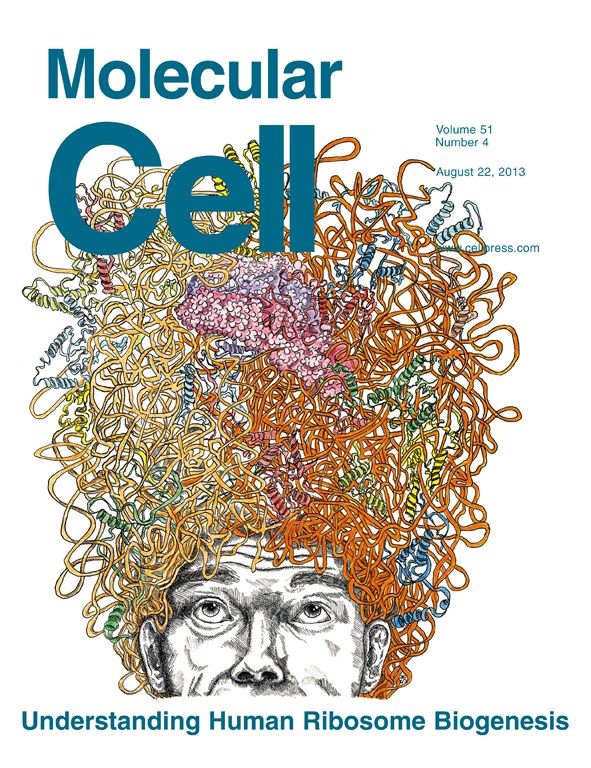博文
MC封面
|

22 August, 2013 Volume 51, Issue 4
On the cover: A man is shown reflecting on how ribosomes are made. Ribosome biogenesis is an extremely complex process involving >200 trans-acting assembly factors in budding yeast. Knowledge on ribosome assembly factors was seriously lagging in humans despite recent interest raised by the emergence of ribosomopathies. In this study, Tafforeau et al. (pp. 539–551) characterized the involvement in pre-rRNA processing of 625 human nucleolar proteins and showed that 286 are required, including 74 without yeast homologs. Many human factors identified here had previously been linked to severe diseases. Nearly one-third of them have additional or even different functions than their yeast homologs. The authors also show that the involvement of selected genes in ribosome biogenesis is well conserved in different cell types, including primary cells, that pre-rRNA processing defects are not p53 dependent, and the defects precede cell-cycle arrest and apoptosis. Cover art by Sibylle Mercat.
Mature ribosomal RNAs (rRNAs) are produced from polycistronic precursors following complex processing. Precursor (pre)-rRNA processing has been extensively characterized in yeast and was assumed to be conserved in humans. We functionally characterized 625 nucleolar proteins in HeLa cells and identified 286 required for processing, including 74 without a yeast homolog. For selected candidates, we demonstrated that pre-rRNA processing defects are conserved in different cell types (including primary cells), defects are not due to activation of a p53-dependent nucleolar tumor surveillance pathway, and they precede cell-cycle arrest and apoptosis. We also investigated the exosome’s role in processing internal transcribed spacers (ITSs) and report that 3′ end maturation of 18S rRNA involves EXOSC10/Rrp6, a yeast ITS2 processing factor. We conclude that human cells adopt unique strategies and recruit distinct trans-acting factors to carry out essential processing steps, posing fundamental implications for understanding ribosomopathies at the molecular level and developing effective therapeutic agents.
https://blog.sciencenet.cn/blog-982855-721665.html
上一篇:Cell封面——真心不是幼儿园
下一篇:最热不过长非编码
全部作者的其他最新博文
- • 一个悲伤的故事
- • 我怀念的
- • 巴德年院士科大报告语摘——受益匪浅
- • 这是个黑童话么?——MC封面文章
- • 你是猴子请来的啥?